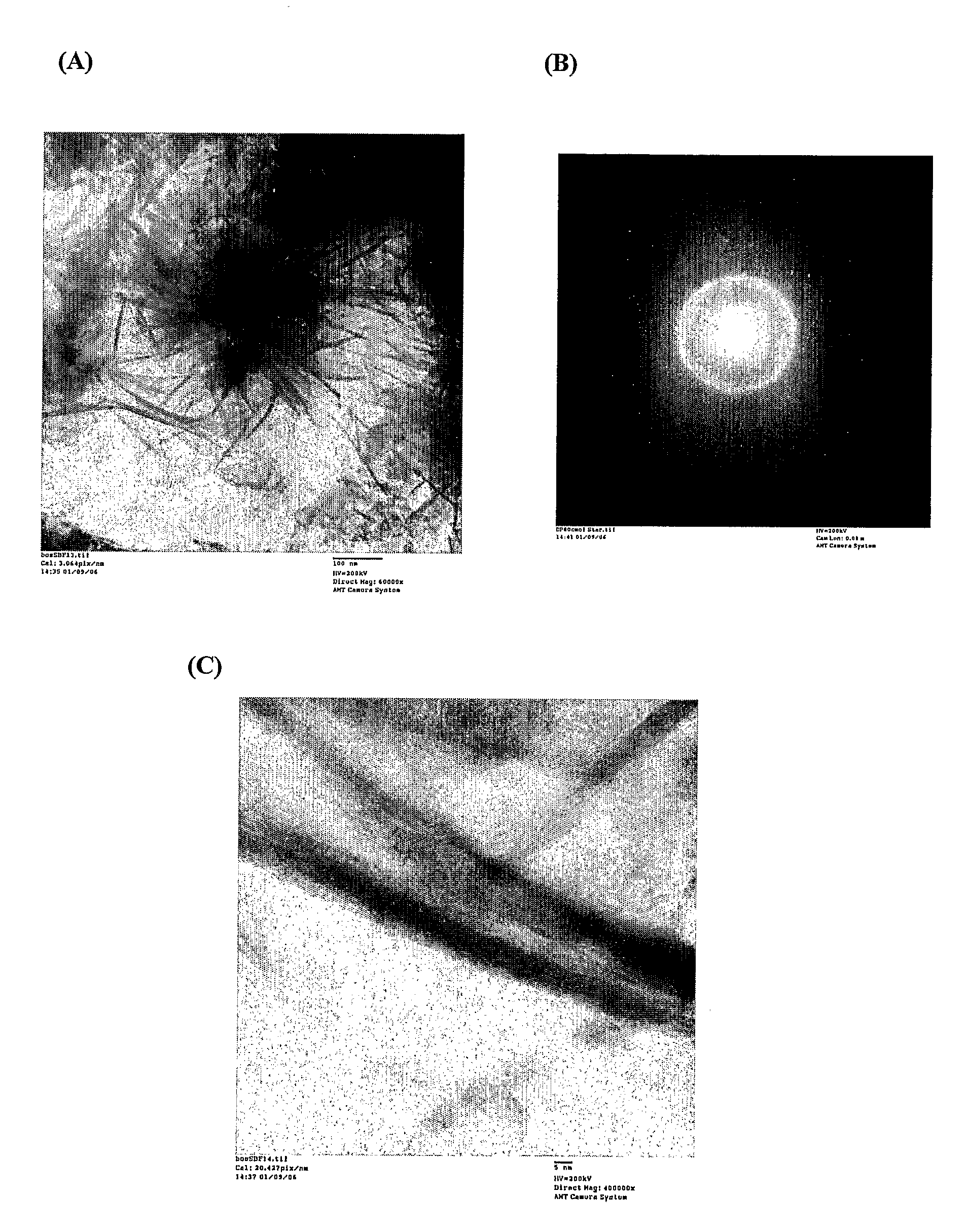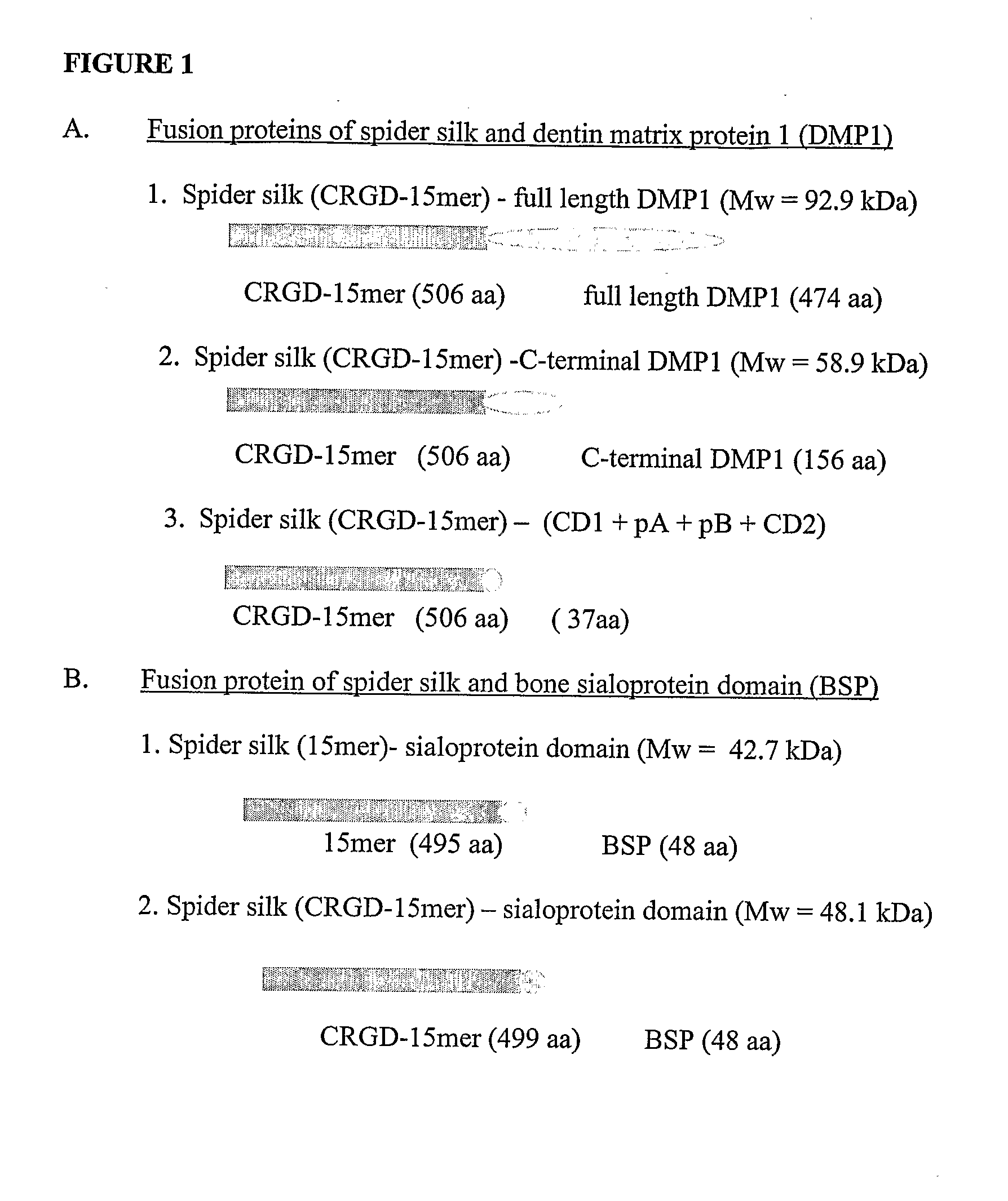Fibrous Protein Fusions and Use Thereof in the Formation of Advanced Organic/Inorganic Composite Materials
a technology of organic/inorganic composite materials and fibroblasts, which is applied in the direction of osteogenic factors, peptides/protein ingredients, prosthesis, etc., can solve the problems of affecting work efficiency, shortage of tissues, and design characteristics of biomaterials, and other problems, to achieve the effect of improving the quality of the material
- Summary
- Abstract
- Description
- Claims
- Application Information
AI Technical Summary
Benefits of technology
Problems solved by technology
Method used
Image
Examples
example 1
Formation of Hydroxyapatite Silk Fusions
[0089]Hydroxyapatite (HAP, Ca5(PO4)3(OH)) is the most stable calcium phosphate salt at normal temperature and pH between 4 and 12 (Aaron, S. Posner Physiological review, 1969, 49(4): 760-792). Hydroxyapatite is the main inorganic component in calcified hard tissue such as bone and teeth of vertebrates (Koutsopoulos, S. J Biomed Mater Res. 2002, 62: 600-612). In addition, hydroxyapatite also has many applications in protein chromatography, water treatment processes, fertilizer and pharmaceutical products (Bailliez, S.; Nzihou, A.; Beche, E.; Flamant, G. Process Safety and Environmental Protection, 2004, 82(B2): 175-180 ). For calcified hard tissue, hydroxyapatite contributes to its stiffness, while organic matrix contributes to its plasticity (Landis, W. J. Bone, 16(5): 533-544). The inherent strength and other mechanical properties of the skeletal system are thought to depend on an interaction between its organic and inorganic matrix strength,...
example 2
Formation of Silica Silk Fusions
Introduction
[0113]Silica is widespread in biological systems and serves different functions, among which the most essential ones include support and protection in single-celled organisms, such as diatoms, to higher plants and animals. Despite its widespread occurrence and importance of function, little is known about biosilica and the mechanisms used to produce controlled microscopic and macroscopic silica structures with such nanoscale precision and symmetry. The remarkable control in vivo of the morphology of these beautiful intricate patterns at small length scales are species-specific and has attracted a great deal of interest in recent years as these features exceed the capabilities of present-day synthetic and technological approaches to materials engineering in vitro.
[0114]Silaffins1; 2; 3; 4; 5 form part of three families of proteins identified to date in the organic matrix of the cell wall of the diatom Cylindrotheca fusiformis. Silaffins are...
PUM
| Property | Measurement | Unit |
|---|---|---|
| binding energies | aaaaa | aaaaa |
| binding energies | aaaaa | aaaaa |
| internal diameter | aaaaa | aaaaa |
Abstract
Description
Claims
Application Information
 Login to View More
Login to View More - R&D
- Intellectual Property
- Life Sciences
- Materials
- Tech Scout
- Unparalleled Data Quality
- Higher Quality Content
- 60% Fewer Hallucinations
Browse by: Latest US Patents, China's latest patents, Technical Efficacy Thesaurus, Application Domain, Technology Topic, Popular Technical Reports.
© 2025 PatSnap. All rights reserved.Legal|Privacy policy|Modern Slavery Act Transparency Statement|Sitemap|About US| Contact US: help@patsnap.com



